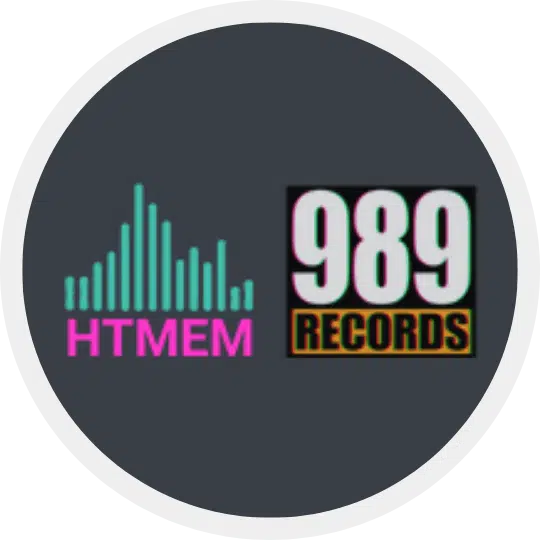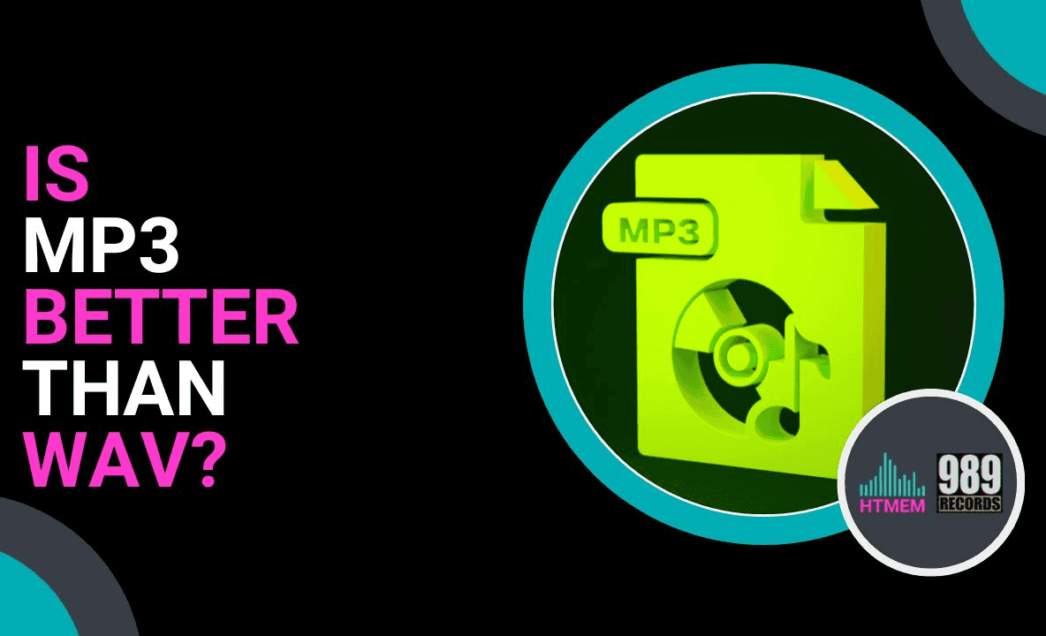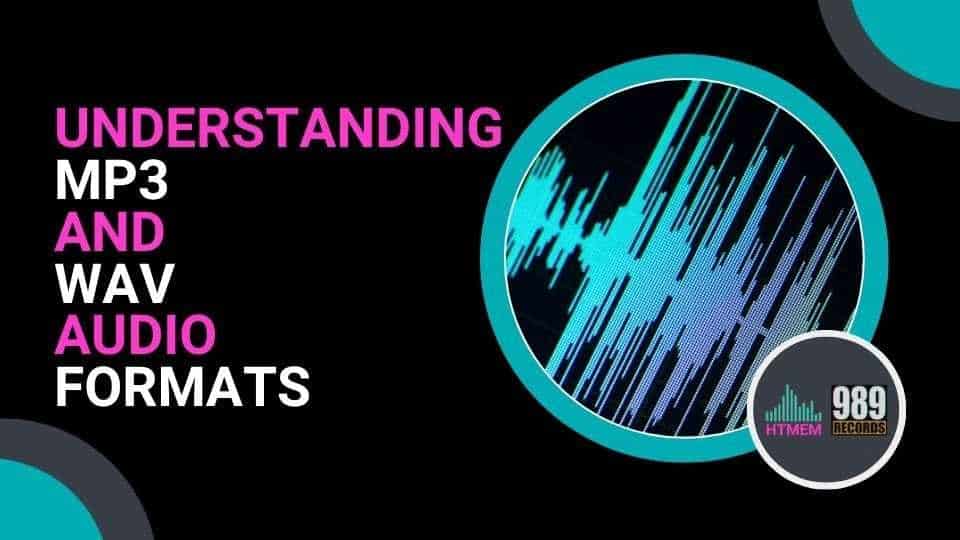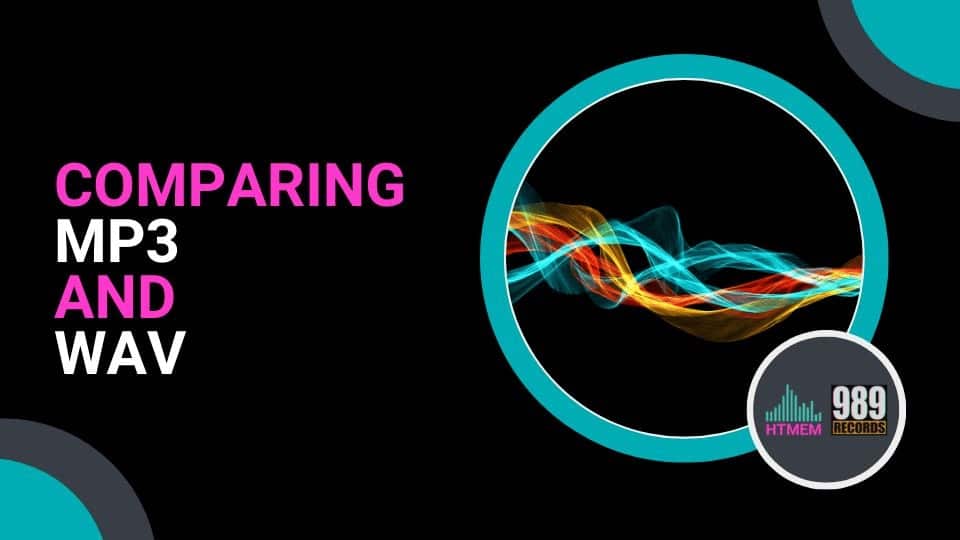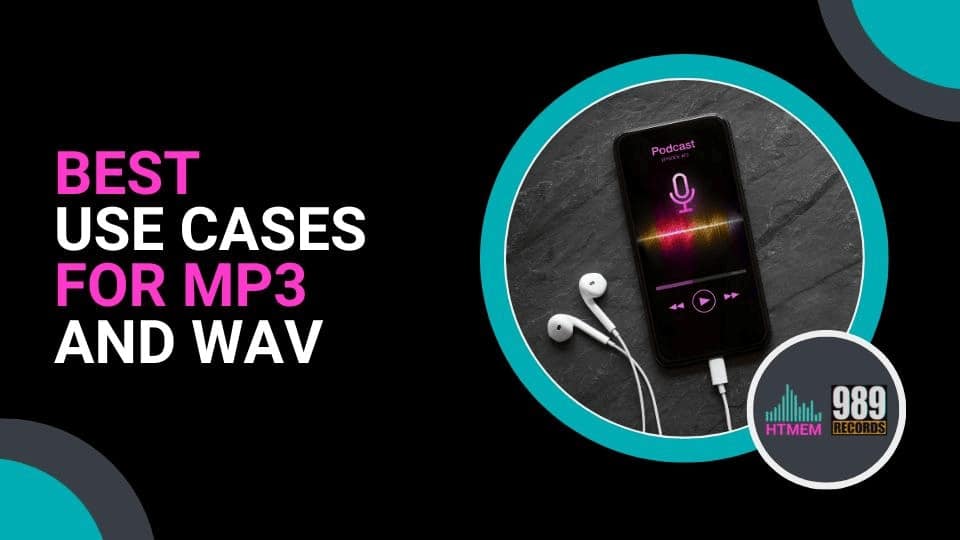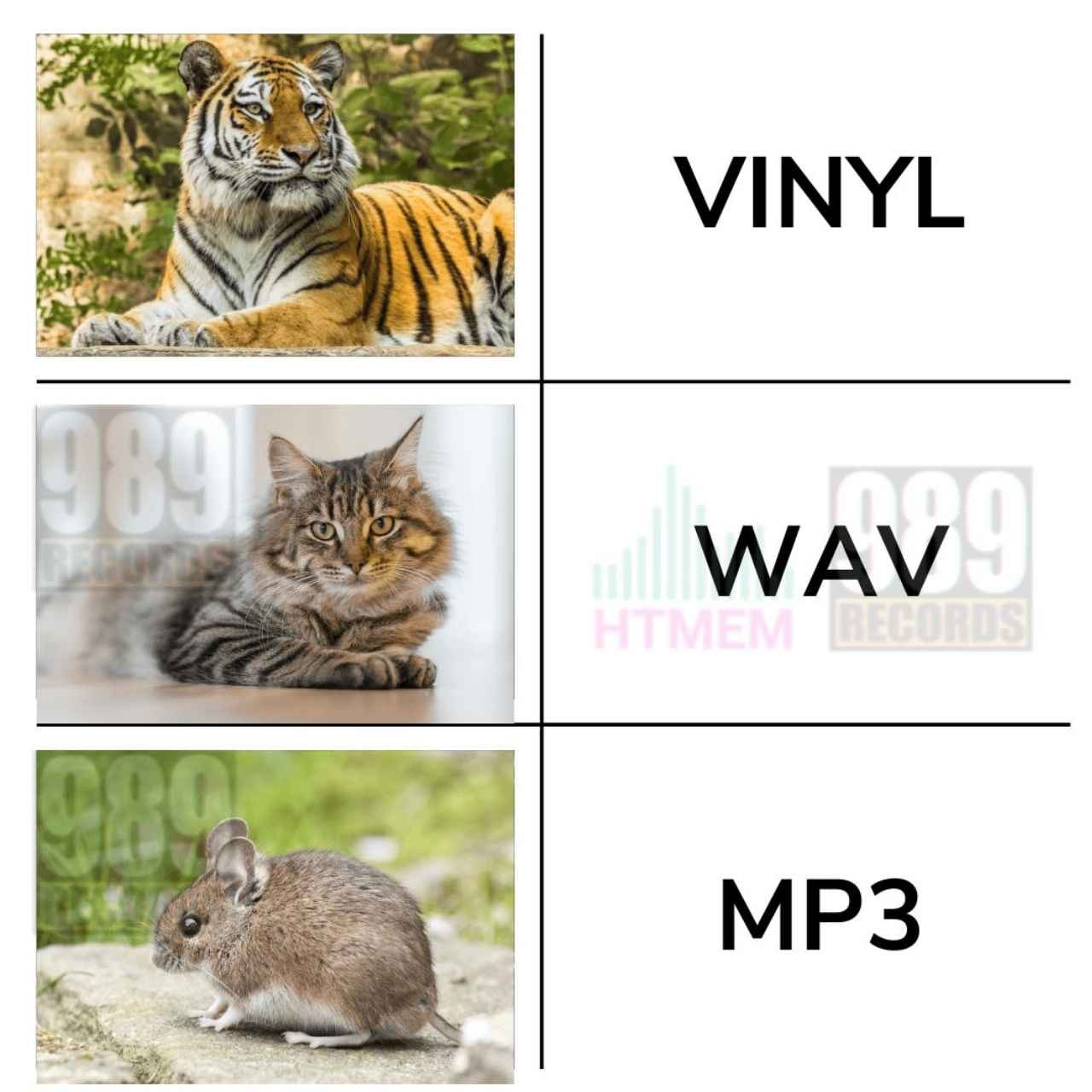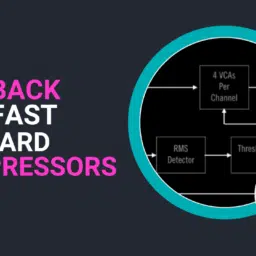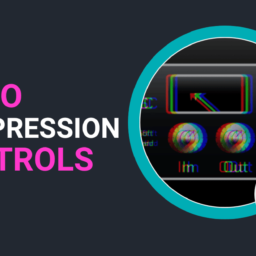An eternal debate in the world of Digital Audio: is MP3 better than WAV? Which one reigns supreme? The answer may not be as clear-cut as you think. While each format has its own unique set of advantages and disadvantages, understanding the differences between them can help you make an informed decision when choosing which audio format is best suited for your needs.
In this blog post, we will delve into the origins and characteristics of these two widely used audio formats, compare their sound quality, file size, compatibility, and editing capabilities, and explore the best use cases for each and one file format alone. Alright, fasten your seatbelts as we dive deep into the audio world to unravel the mystery behind this battle!
Key Takeaways
- Comparing MP3 and WAV requires an evaluation of sound quality, file size, compatibility & editing capabilities.
- MP3 is a popular lossy compression standard with smaller file sizes but some degradation in audio quality. Whereas WAV offers uncompressed high-quality audio at larger file sizes.
- The best format for specific use cases depends on the user’s needs & priorities, from streaming to production to personal listening.
Table of Contents
Understanding MP3 and WAV Audio Formats
– MP3: A Lossy Compression Standard
– WAV: Uncompressed High-Quality Audio
Comparing MP3 and WAV: Key Factors to Consider
– Sound Quality and Perceptual Differences
– File Size and Storage Requirements
– Compatibility with Devices and Software
– Editing and Post-Production
Best Use Cases for MP3 and WAV
– Music Streaming and Distribution
– Professional Audio Production
– Personal Listening and Storage
Converting Between MP3 and WAV
– Recommended Audio Conversion Tools
– Conversion Process and Quality Considerations
Summary
Frequently Asked Questions
– Is WAV the best audio format?
– Why is MP3 more popular than WAV?
– Are WAV files louder than MP3?
– What is the primary quality difference, between MP3 and WAV audio formats?
– What are some recommended audio conversion tools for converting between MP3 and WAV formats?
Understanding MP3 and WAV Audio Formats
The MP3 (MPEG Audio Layer-3) and WAV (Waveform Audio File Format) are two audio formats that have been around for decades, serving different purposes in the realm of digital audio.
MP3 is a compressed, lossy audio format known for its small file size and broad compatibility, while WAV is an uncompressed, lossless audio format that offers high-quality sound but produces larger file sizes in comparison to MP3.
The primary distinctions between these formats lie in their compression methods and resulting audio quality. MP3 files are compressed, leading to reduced file sizes but at the cost of some audio quality due to data loss during compression.
On the other hand, WAV files boast higher sound quality as they are uncompressed and retain all the original audio data.
MP3: A Lossy Compression Standard
Emerging in the early 1990s, MP3 quickly gained popularity due to its ability to significantly reduce file sizes without sacrificing too much audio quality. The secret behind this feat lies in the format’s lossy compression algorithm, which selectively removes audio data that is less perceptible to the human ear, resulting in smaller files that still sound relatively good.
However, this compression comes at a cost. The lossy nature of MP3 can lead to some degradation in audio quality, especially in the lower and higher ends of the frequency range. Despite this, MP3 files remain a popular choice for their small size and wide compatibility with various devices and software.
WAV: Uncompressed High-Quality Audio
Developed by Microsoft and IBM, WAV files, also known as the WAV file format or Waveform Audio File Format, store raw, uncompressed audio data, resulting in high-quality sound. This format employs linear pulse-code modulation (LPCM) to ensure that the audio remains lossless and retains its original quality. Consequently, WAV files are larger compared to MP3 files, as they preserve all the audio information. The WAV audio format, sometimes referred to as the WAV format, is a popular choice for those who prioritize audio quality over file size.
WAV files, a common type of digital audio files, are often utilized by professional music producers and audio engineers, as they offer the highest audio resolution available and can seamlessly accommodate post-recording processing in digital audio workstations. However, their larger file sizes may be a drawback for casual listeners and those with limited storage space.
Comparing MP3 and WAV: Key Factors to Consider
Having understood the fundamental characteristics of MP3 and WAV audio formats, it’s time to explore what differentiates them. Sound quality, file size, compatibility, and editing capabilities are essential aspects to consider when choosing between these formats, as each factor can significantly impact the overall listening experience and the suitability of the format for specific use cases.
A detailed examination of these factors will provide insight into the pros and cons of each format, thus helping to identify the optimal choice for varied scenarios like music streaming, professional audio production, and personal listening.
Sound Quality and Perceptual Differences
WAV files, known as uncompressed audio files, are recognized for their superior sound quality, as they maintain all the original audio data. Meanwhile, MP3 files use lossy compression, which results in some audio information being discarded to reduce file size. This can lead to a decrease in audio quality, particularly when compared to WAV files.
However, the perceptual difference in sound quality between MP3 and WAV may be negligible for most listeners, especially when streaming music online. For instance, a 320kbps MP3 is often considered to be of sufficient quality for casual listening and even large venues, as the human ear can only detect a frequency range of 20Hz to 20kHz.
Ultimately, the choice between MP3 and WAV quality may come down to personal preference and the specific needs of the listener.
File Size and Storage Requirements
File size is another key factor to consider when comparing MP3 and WAV audio formats. Since MP3 files are compressed, they are significantly smaller than their uncompressed WAV counterparts. This makes MP3 files more suitable for streaming services, portable devices, and situations where storage space is limited.
On the flip side, the sheer size of WAV files might not be ideal for casual listeners or those who are short on storage space, given the larger amount of storage they consume due to their uncompressed format.
However, the trade-off in file size comes with the benefit of higher audio quality, which may be a priority for some users and use cases.
Compatibility with Devices and Software
Both MP3 and WAV files are generally compatible with a wide range of devices and software, but MP3 files enjoy broader compatibility due to their long-standing industry standard status. MP3 files can be played on multiple platforms, including:
- Mac, iOS, iPad, Linux, Windows
This makes them a more versatile option for general listening.
WAV media files themselves, on the other hand, may require specialized software or hardware for playback and editing, and can sometimes encounter compatibility issues when being uploaded to specific platforms. While WAV files offer higher audio quality, their compatibility limitations may be a concern for some users, especially when sharing audio files across various platforms and devices.
Editing and Post-Production
When it comes to editing and post-production, WAV files are the preferred choice due to their almost lossless compression nature, which allows for easier editing and manipulation of the audio data. In contrast, MP3 files may require decoding and re-encoding for editing purposes, which can lead to further audio quality loss due to compression.
Thus, for professional audio production tasks, such as television, radio, and film, as well as post-recording processing in digital audio workstations, WAV files offer clear advantages over MP3 files in terms of sound quality and editing capabilities.
Best Use Cases for MP3 and WAV
Having dissected the key differentiators between MP3 and WAV audio formats, we can now assess the ideal use cases for each format. Depending on the specific needs and priorities of the user, one format may be more suitable than the other for particular scenarios, such as music streaming, professional audio production, and personal listening.
A clear grasp of the merits and demerits of each of the file formats will guide you in making an informed decision on the most suitable format for your specific needs, be it as a professional audio engineer, a casual listener, or anything in between.
Music Streaming and Distribution
MP3 files are the go-to choice for music streaming and distribution due to their smaller file size and wide compatibility with various platforms and devices. Their compressed nature makes them more convenient for uploading, downloading, and streaming, ensuring a smooth listening experience for users on different platforms and mobile devices.
Moreover, the actual difference in audio quality between MP3 and WAV files may not be perceptible to the average listener, particularly when streaming music online. Therefore, for music streaming and distribution purposes, MP3 files offer a practical and efficient solution that caters to the needs of both content creators and listeners.
Professional Audio Production
For professional audio production, such as television, radio, and film, as well as post-recording processing in digital audio workstations, WAV files are the preferred choice. Their lossless nature and higher audio quality make them ideal for tasks that require precise editing and manipulation of the audio data.
Additionally, professional music producers and audio engineers often rely on the superior sound quality of WAV files to ensure that their work meets the highest standards in the industry. While the bigger file size might be a disadvantage for everyday listeners, the enhanced sound quality is a worthy trade-off for those in the field of professional audio and music production.
Personal Listening and Storage
When it comes to personal listening and storage, the choice between MP3 and WAV files largely depends on the individual listener’s preferences and priorities. For those who value storage space and device compatibility, MP3 files may be a more suitable option due to their smaller file size and broader compatibility with various devices and platforms.
On the other hand, if sound quality is a top priority, WAV files may be the better choice, as they offer a superior listening experience due to their uncompressed nature and higher audio quality. Ultimately, the choice between MP3 and big WAV files for personal listening and storage will depend on the listener’s specific needs and priorities.
Converting Between MP3 and WAV
In some cases, you may need to convert between MP3 and WAV formats to suit specific requirements or preferences. The conversion process can be simple and straightforward with the help of recommended audio conversion tools and a clear understanding of the quality considerations involved in the conversion.
This section provides insight into the top-recommended audio conversion tools for converting between MP3 and WAV formats, along with the conversion process and quality considerations vital in achieving the best outcome for your specific needs.
Recommended Audio Conversion Tools
There are several recommended audio conversion tools available for converting between MP3 and WAV formats, such as EaseUS Video Converter, Movavi Video Converter, and other similar software. Or, if you’re a Mac user, XLD Converter is my go-to tool.
These tools offer user-friendly interfaces and a range of features to help you efficiently convert your audio files while maintaining the desired quality.
In addition to these dedicated conversion tools, some popular audio editing software, such as Audacity and Adobe Audition, also provide built-in support for converting between various audio formats, including MP3 and WAV.
By opting for the right tool based on your requirements, you can conveniently convert your audio files to the needed format while assuring the best possible quality and compatibility.
Conversion Process and Quality Considerations
Quality of the audio and file size are critical considerations when converting between MP3 and WAV formats. Selecting the appropriate settings for your specific needs is vital as bit rate, sample rate, and other audio parameters can have a significant influence on the final output.
To convert between MP3 and WAV, you can follow these steps:
- Choose the Appropriate Conversion Tool or Software.
- Select the MP3 or WAV file you wish to Convert.
- Choose the output format (MP3 or WAV).
- Start the Conversion Process and Adjust the Quality Settings as Needed.
It’s important to note that the standard CD quality for a WAV file is a sample rate of 44.100 kHz and 16-bit.
On the other hand, the standard quality of an MP3 file is considered to be 320 kbps at a Constant Bit rate (CBR).
With the right considerations and tools, successful conversion of your audio files between MP3 and WAV formats, while achieving optimal results, is indeed possible.
Wanna know more about audio file formats? Check out our Mixing Course.
Or get a deeper knowledge of Digital Theory? Check Our Acoustic, Analog, and Digital Signals Explained Course
Summary
In conclusion, both MP3 and WAV audio files and formats offer unique advantages and disadvantages, making them suitable for different use cases and preferences. MP3 files are popular for their small file size, wide compatibility, and suitability for music streaming and distribution. In contrast, WAV files are favored by professional audio producers and those who prioritize high-quality sound and editing capabilities.
Ultimately, the choice between MP3 and WAV formats will depend on your specific needs and priorities.
By understanding the key differences between the two formats and considering factors such as sound quality, file size, compatibility, and editing capabilities, you can make an informed decision and choose the audio format that best suits your requirements.
Frequently Asked Questions
Is WAV the Best Audio format?
WAV is widely considered the best audio format for sound quality due to its uncompressed nature and greater bit depth. It is the preferred choice among many audio professionals and engineers, allowing them to maintain high fidelity while preserving the original data of their sound files.
Why is MP3 more Popular than WAV?
MP3s are much more popular than WAV files because they use compression algorithms to reduce the file size while still retaining good audio quality, thus making them easier and more convenient to store and share. Additionally, MP3 files can be significantly smaller than WAV files of equivalent sound quality.
Are WAV Files Louder than MP3?
WAV files and MP3s are typically the same in terms of loudness, but slight nuances may be lost due to the MP3’s lossy compression. Ultimately, the difference in loudness is minimal.
What is the Primary Difference Between MP3 and WAV Audio Formats?
MP3 files are compressed and sacrifice audio quality for a smaller file size, while WAV files are uncompressed and maintain their original, high-quality audio.
What are some Recommended Audio Conversion Tools for Converting Between MP3 and WAV Formats?
EaseUS Video Converter, Movavi Video Converter, Audacity, and Adobe Audition are some of the recommended tools for converting between MP3 and WAV file formats.
Suggested Readings
Step-By-Step Guide to Making a Beat
Practice and Enjoy!
